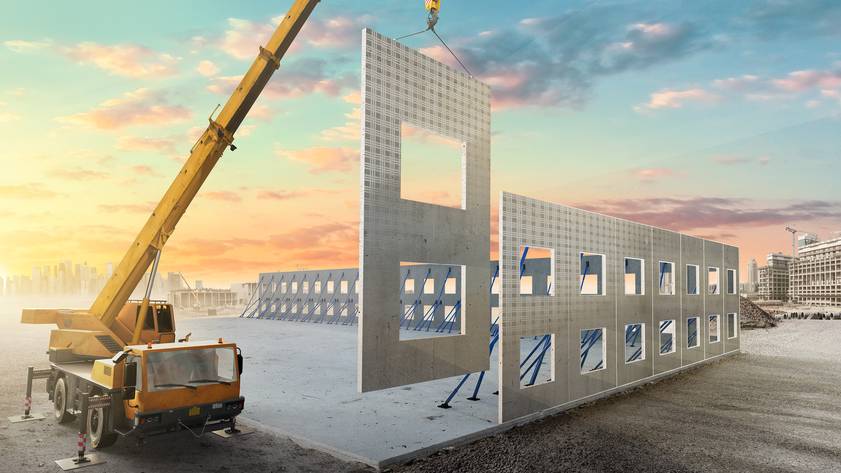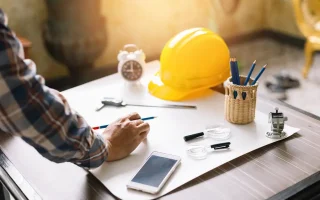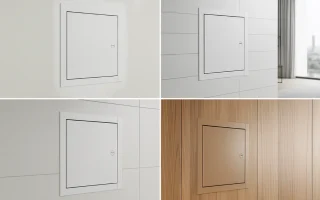When deciding to build a home, one of the first major decisions you’ll face is choosing between prefabricated homes and traditional construction. Both methods come with their own set of benefits and drawbacks, so let’s break them down to see which option aligns best with your needs.
What Exactly Are Prefabricated Homes?
Prefabricated homes, often called prefab homes, are structures built in a factory rather than on-site. They typically fall into categories like modular homes, manufactured homes, or panelized homes, depending on their specific building techniques. Prefabrication involves off-site construction, meaning components or entire sections are built in factories and then transported to the home location, where they’re assembled.
Traditional Construction Explained
Traditional construction is what most people picture when they imagine building a home: construction crews on-site, building everything from the ground up. Materials are delivered directly to the plot, and the structure is crafted piece-by-piece, typically involving a more extended construction timeline and more variable quality control.
Let’s dive deeper into the pros and cons of each to understand their differences clearly.
Pros of Prefabricated Homes
1. Shorter Building Timeframes
One standout advantage of prefabricated homes is speed. Because the components are manufactured simultaneously in a controlled environment, construction timelines significantly reduce. Where a traditional home might take six months or more, a prefabricated home can be completed in as little as 2-3 months.
2. Cost Efficiency
Cost is another major factor favoring prefab homes. Off-site construction allows bulk material purchasing, precise labor management, and minimized waste.
This streamlining typically results in substantial savings—often between 10% to 25% cheaper than traditional homes. Developments like prefabricated homes in Saguenay, such as Domaine des Verts Boisés by Bonneville Homes in Saguenay–Lac-Saint-Jean, show how factory-built homes can deliver both cost efficiency and elevated design.
3. Better Quality Control in Construction
Since prefabricated homes are built in controlled factory settings, there’s a strict quality assurance process. Unlike traditional construction, where weather and inconsistent labor can affect quality, prefab homes maintain consistent standards. Materials are protected from weather-related issues like moisture, ensuring structural integrity and durability.
4. Energy Efficiency in Homes
Prefab homes often excel in energy efficiency. Modern modular homes are designed with sustainability in mind, incorporating eco-friendly materials and insulation techniques that reduce energy bills by up to 20%. For environmentally conscious homeowners, prefabrication is appealing due to these sustainable building practices.
5. Minimal Construction Waste
Prefabrication significantly reduces waste by using standardized sizes and pre-measured materials. In contrast, traditional construction generates substantial debris, affecting both the environment and overall costs. Prefab construction reduces waste by up to 70%, making it an environmentally friendly choice.
Cons of Prefabricated Homes
1. Limited Customization Options
One downside to prefab homes is the constraint on customization. Modular homes often follow set designs and floor plans. Although some customization is possible, fully personalized options can be limited compared to traditional construction, where architects can design homes uniquely tailored to your preferences.
2. Transportation and Zoning Challenges
Transporting prefabricated components can be complicated. Some areas have strict zoning regulations and building codes regarding manufactured homes. These legal restrictions can limit where you place your prefab home, making zoning research critical beforehand.
3. Potential Resale Value Issues
While improving steadily, prefabricated homes may still face biases in resale markets. Buyers unfamiliar with prefab benefits sometimes undervalue these homes. However, this trend is changing as energy efficiency and sustainable building practices become more desirable.
Pros of Traditional Construction
1. High Level of Customization
The biggest advantage of traditional construction is its flexibility. You have the freedom to create any layout, incorporate unique features, and choose specialized materials. If customization and uniqueness are priorities, traditional methods have clear advantages.
2. Easier Financing and Acceptance
Traditional homes are generally easier to finance because lenders and appraisers have clearer benchmarks. Banks are comfortable with traditional construction, which often translates into straightforward mortgage approval and easier resale.
3. Fewer Zoning Restrictions
Traditional homes typically face fewer zoning challenges because most communities readily accept conventional building practices. Building codes and community standards typically align with traditional methods, making approvals smoother and less bureaucratic.
4. Established Resale Market
Traditional homes have a robust and predictable resale market. Buyers recognize and trust traditionally built homes, often resulting in stable or increasing property values.
Cons of Traditional Construction
1. Longer Construction Period
Traditional construction timelines can extend from several months to even over a year, depending on complexity and weather conditions. Longer building timeframes increase costs and can delay move-in dates significantly.
2. Higher Costs and Unexpected Expenses
Construction costs for traditional homes are often higher, with variability in material prices, labor costs, and delays due to weather conditions or unforeseen issues. Unexpected expenses can add significantly to the original budget, creating financial strain for homeowners.
3. Environmental Concerns
Traditional construction generates more waste and typically consumes more energy. Since building occurs outdoors, materials exposed to weather can deteriorate, creating additional environmental impacts through waste and replacement requirements. Traditional homes also usually lack the standardized sustainable building practices of modern prefab homes.
4. Quality Control Issues
Quality assurance in traditional construction relies heavily on the skill and attentiveness of individual workers. Variations in workmanship can cause inconsistencies and future structural problems. Weather conditions also impact quality, potentially compromising structural integrity and longevity.
The Verdict: Which Should You Choose?
Ultimately, the decision between prefabricated and traditional construction boils down to your individual priorities. If affordability, energy efficiency, faster timelines, and environmental benefits align with your vision, prefabricated homes offer compelling advantages. However, if your dream home requires complete customization, fewer zoning restrictions, and you prefer traditional mortgage financing, conventional construction may suit you best.
Consider your lifestyle, budget, customization needs, and long-term goals carefully. Both construction methods have merits and shortcomings. Aligning these with your vision ensures your home-building experience is satisfying and financially sound.
Final Thoughts
The choice between prefabricated and traditional construction is personal and complex. Modern modular homes are rapidly gaining popularity due to their affordability, energy efficiency, and quicker construction. However, traditional homes continue to appeal to those looking for complete design flexibility and simpler financing processes.
Incorporating sustainable building practices, considering energy efficiency, and understanding zoning requirements will further guide your decision-making process. By weighing these factors against your personal preferences, you’ll find the construction method that best fits your dream home vision and lifestyle goals.




